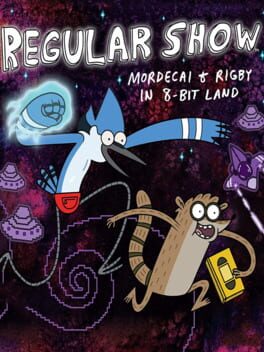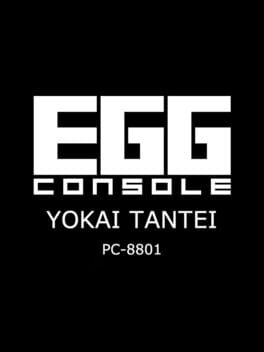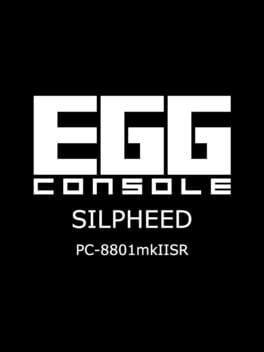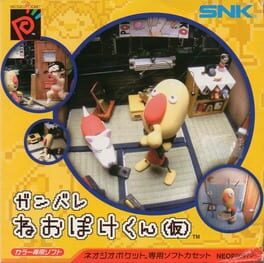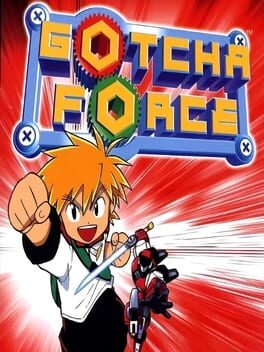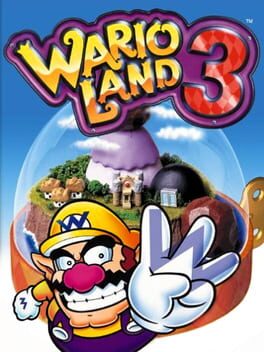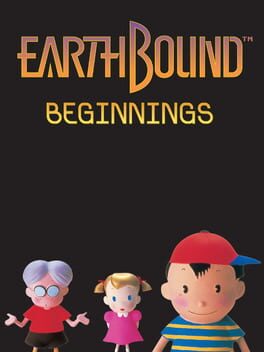ReadOnlyMuseum
The quintessential WayForward licensed game; a good skeletal foundation, but with no meat on its bones.
Things start out promising enough, with both Mordecai and Rigby controlling satisfyingly, and a promising central gimmick where you switch between gameplay and perspective on the fly (ground-based platformer, 2D shooter, top-down shooter) but it feels more like an unfinished proof-of-concept rather than a fully realized title. The level design is about as dry as it gets, with drab, featureless platforms and mazes lacking any sort of variety or creativity (a common problem for licensed WayForward titles, believe it or not).
Enemies are listlessly plopped into the environment with no real rhyme or reason, and worse yet, the hit detection is atrocious, requiring you to land pixel-perfect, dead center on their sprites, which doesn't really work seeing as how many of them are thin, small or both (there's a reason why Mario and Sonic enemies are always short and squat). As a result, you'll usually end up avoiding enemies altogether, which is a death sentence for a 2D platformer.
If there's one redeeming, fully realized quality, it'd be the presentation. Jake Kaufman fires on all cylinders with the BGM yet again, and the visuals nail the look of the show, all filtered through the gorgeous spritework that we've come to expect from WayForward, not to mention great little touches like the space background being recycled from the title screen, as it is in the series. It's clear that the dev team were fans of the source material, and by that metric it might be worth a cursory glance for diehard fans of the show, but the cool central mechanic is wasted on a game that feels like it was rushed to its deadline by the licenseholders, a familiar tragic tale for many licensed games.
Things start out promising enough, with both Mordecai and Rigby controlling satisfyingly, and a promising central gimmick where you switch between gameplay and perspective on the fly (ground-based platformer, 2D shooter, top-down shooter) but it feels more like an unfinished proof-of-concept rather than a fully realized title. The level design is about as dry as it gets, with drab, featureless platforms and mazes lacking any sort of variety or creativity (a common problem for licensed WayForward titles, believe it or not).
Enemies are listlessly plopped into the environment with no real rhyme or reason, and worse yet, the hit detection is atrocious, requiring you to land pixel-perfect, dead center on their sprites, which doesn't really work seeing as how many of them are thin, small or both (there's a reason why Mario and Sonic enemies are always short and squat). As a result, you'll usually end up avoiding enemies altogether, which is a death sentence for a 2D platformer.
If there's one redeeming, fully realized quality, it'd be the presentation. Jake Kaufman fires on all cylinders with the BGM yet again, and the visuals nail the look of the show, all filtered through the gorgeous spritework that we've come to expect from WayForward, not to mention great little touches like the space background being recycled from the title screen, as it is in the series. It's clear that the dev team were fans of the source material, and by that metric it might be worth a cursory glance for diehard fans of the show, but the cool central mechanic is wasted on a game that feels like it was rushed to its deadline by the licenseholders, a familiar tragic tale for many licensed games.
Yokai Tantei isn't trying to hide anything; it wears its influence on its sleeve, that influence being Hudson's flagship creation, Bomberman.
You control a little Medama-Oyaji lookalike, tasked with clearing out a maze swarming with enemies (you can choose between Japanese yokai or western Universal monsters, which is a nice touch). Unlike Bomberman, your form of attack is a bit more direct, however, and this is where the the main hook of Yokai Tantei comes in.
Potentially taking influence from another Hudson creation, Binary Land, you shoot a fireball which can dart all around the maze, and is controlled contemporaneously with the main character. The two move at different speeds, and —much like Bomberman— the cross-shaped blast radiuses when you activate the fireball will kill you as well, so there's quite a bit to micromanage here.
When I first booted this one up, I didn't really care for it that much, as I thought the mazes were too cramped, and the spawn rates of the enemies were too unrelenting. That is, until I realized that the fireball can actually kill enemies by simply making normal contact with them. Once I got this, the game clicked; it's the classic temptation of risk vs. reward, whether you want to clear out enemies by firing point-blank, or risk trying to get a massive combo by blowing them all up at once for more points. I haven't figured it out completely, but it seems the enemies need to be hit at a specific angle from the fireball to die, so as not to ruin any combo potential.
As for this particular version, much like Relics (another Bothtec creation) the PC-88 version they chose to use isn't the best, but it's not as dire as Relics' 88 port was. It certainly looks better than the MSX version, but lacks the music of the other ports, though it's by no means a dealbreaker. The speed-up feature is perhaps more welcome here than any previous title, as it allows you to plow through the ridiculously slow loading times.
You control a little Medama-Oyaji lookalike, tasked with clearing out a maze swarming with enemies (you can choose between Japanese yokai or western Universal monsters, which is a nice touch). Unlike Bomberman, your form of attack is a bit more direct, however, and this is where the the main hook of Yokai Tantei comes in.
Potentially taking influence from another Hudson creation, Binary Land, you shoot a fireball which can dart all around the maze, and is controlled contemporaneously with the main character. The two move at different speeds, and —much like Bomberman— the cross-shaped blast radiuses when you activate the fireball will kill you as well, so there's quite a bit to micromanage here.
When I first booted this one up, I didn't really care for it that much, as I thought the mazes were too cramped, and the spawn rates of the enemies were too unrelenting. That is, until I realized that the fireball can actually kill enemies by simply making normal contact with them. Once I got this, the game clicked; it's the classic temptation of risk vs. reward, whether you want to clear out enemies by firing point-blank, or risk trying to get a massive combo by blowing them all up at once for more points. I haven't figured it out completely, but it seems the enemies need to be hit at a specific angle from the fireball to die, so as not to ruin any combo potential.
As for this particular version, much like Relics (another Bothtec creation) the PC-88 version they chose to use isn't the best, but it's not as dire as Relics' 88 port was. It certainly looks better than the MSX version, but lacks the music of the other ports, though it's by no means a dealbreaker. The speed-up feature is perhaps more welcome here than any previous title, as it allows you to plow through the ridiculously slow loading times.
Seeing the wireframes and polygons they were able to achieve on an 8-bit computer makes this a worthwhile experience, really showing how (between this and Thexder) Game Arts were programming magicians of the PC-88.
As for the gameplay, it's pretty good too, it's a lot more playable than some of the other Eggconsole rereleases, being a straightforward shmup. The genre was evolving rapidly at the time and it doesn't quite measure up to some of the shooters that were coming out for consoles and game centers, (Darius, Salamander, Fantasy Zone...) but it has some fun powerups and unique level design, with said powerups being put in purposeful locations relative to the hazards ahead. Being able to change your type of fire before each level is pretty sick too.
The one actual flaw is that the game's tilted perspective (à la Radar Scope) is just as disorienting as it is impressive, and you're better off sticking to the bottom of the screen, taking potshots from afar like an early Invaders clone, which doesn't feel nearly as good. Overall though, this is a technical marvel for the time, and worth checking out if you want to dive into some early Japanese computer titles that actually stand the test of time.
As for the gameplay, it's pretty good too, it's a lot more playable than some of the other Eggconsole rereleases, being a straightforward shmup. The genre was evolving rapidly at the time and it doesn't quite measure up to some of the shooters that were coming out for consoles and game centers, (Darius, Salamander, Fantasy Zone...) but it has some fun powerups and unique level design, with said powerups being put in purposeful locations relative to the hazards ahead. Being able to change your type of fire before each level is pretty sick too.
The one actual flaw is that the game's tilted perspective (à la Radar Scope) is just as disorienting as it is impressive, and you're better off sticking to the bottom of the screen, taking potshots from afar like an early Invaders clone, which doesn't feel nearly as good. Overall though, this is a technical marvel for the time, and worth checking out if you want to dive into some early Japanese computer titles that actually stand the test of time.
2004
Aside from the aiming reticle maybe being a little slippery and sensitive, this is honestly a puzzle masterpiece, with a low skill floor and a high skill ceiling; it's simply baffling that it was never officially released despite being basically complete and still hasn't been set free in any capacity 27 years later.
Technically the only official way to try it is to play Magical Drop V, which features the Ghostlop cast with their gameplay, but it leads to a lot of imbalance between the two games' speeds, not unlike Puyo Puyo Tetris. Just do yourself a favor and play the original on emulator or flashcart, it's absolutely worth it.
Technically the only official way to try it is to play Magical Drop V, which features the Ghostlop cast with their gameplay, but it leads to a lot of imbalance between the two games' speeds, not unlike Puyo Puyo Tetris. Just do yourself a favor and play the original on emulator or flashcart, it's absolutely worth it.
2000
I've seen a couple reviews or comments online saying that it's boring to wait for Poke-kun to make a new game, or that the inputs in his room don't do anything, but this isn't true. I haven't mapped out exactly when to use each input, but I've figured a few things out that will really speed up the process;
-When Poke-kun is really depressed, bring in a visitor or hold down, it usually makes him feel better.
-When Poke-kun is thinking or playing a video game, turn on the light, it makes him happy.
-If he starts doing crunches, leave him be; his mood is great and he'll go to work in a bit.
-Don't bother spinning the d-pad, it's amusing, but it only dampens his mood.
Remember, Poke-kun will only leave home to program a few times a day; you'll have to either set the internal clock forward or wait a day if you want to keep grinding more minigames out of him.
Anyway, super charming and fun minigame collection that pays homage to the various eras of gaming, check it out on NGPC Selection Vol. 2.
-When Poke-kun is really depressed, bring in a visitor or hold down, it usually makes him feel better.
-When Poke-kun is thinking or playing a video game, turn on the light, it makes him happy.
-If he starts doing crunches, leave him be; his mood is great and he'll go to work in a bit.
-Don't bother spinning the d-pad, it's amusing, but it only dampens his mood.
Remember, Poke-kun will only leave home to program a few times a day; you'll have to either set the internal clock forward or wait a day if you want to keep grinding more minigames out of him.
Anyway, super charming and fun minigame collection that pays homage to the various eras of gaming, check it out on NGPC Selection Vol. 2.
2008
There's arcade compilations, games that try to emulate the arcade experience, and then there's Maboshi's Arcade.
Designed by Panekit creator Kuniaki Watanabe, Maboshi is a rare breed of game that not only tries to pay homage to a very specific subset of games, but attempts to elevate it, being on a different, more advanced platform and using the unique features of the system. You're presented three insanely simple, high score challenge games; titles that would have been around in the era of Qix, but with a brilliant central hook that ties it all together.
Maboshi contains three windows that you can choose to play any of the three games; at any point, someone else can jump in without interrupting your own play session and occupy one of the windows next to you, allowing each of you to chase your personal best side-by-side. This is a fascinating idea in and of itself, but what pushes it into brilliance is how each of the games can interact with one another, debris and projectiles flying from window to window that can help assist anyone playing adjacent to you.
In an early review for the game, indie dev Anna Anne Anthropy coined the phrase "cooperative single-player" to describe it, which really helps emphasize how unique and uncontested this concept is in the grand scheme of things. The individual games are addicting and enjoyable enough to play on your own, but chasing after your personal best side by side with a friend and being able to help one another (intentional or otherwise) is such an incredible concept, filled with untapped potential for other games to explore.
In order to test your understanding of these cooperative mechanics, the game even challenges you to assist a passive character named "Mr. Maboshi" who will ask you to help him reach a certain score using the knock-on affect system as he occupies the window next to you, even enticing you with a reward should you help him reach his milestone.
All of this would be moot of course, if the games themselves weren't enjoyable, but as I mentioned before, all three of them are addictive and enticing, though in my personal opinion one of them (Square) falls just short of the other two in terms of design, being neither as fast-paced or intuitive. The game even allows you to send co-op free versions of the games to your DS via download play, if you want to practice them on the go, and while the brilliance is somewhat lost without the overlap feature, it's a testament to how fun the games are that I still enjoyed playing them on their own.
Earlier, I alluded that Maboshi is, as its own title would imply, a game trying to pay homage to arcades or game centers. But it captures an element that most arcade tribute titles miss, which is the social aspect; playing completely different cabinets, completely different games shoulder to shoulder with someone else, and then using the fact it's all on one compilation to its advantage, using its single-player co-op system to create a unique, memorable multiplayer experience that can be simply enjoyed passively with friends, actively cooperating or even just enjoying it on your own. No matter which way you play it, Maboshi is truly an overlooked masterpiece for the Wii, chock-full of ideas that are begging to be expanded on further in other titles, or for a rerelease to save it from its badly-preserved status.
Designed by Panekit creator Kuniaki Watanabe, Maboshi is a rare breed of game that not only tries to pay homage to a very specific subset of games, but attempts to elevate it, being on a different, more advanced platform and using the unique features of the system. You're presented three insanely simple, high score challenge games; titles that would have been around in the era of Qix, but with a brilliant central hook that ties it all together.
Maboshi contains three windows that you can choose to play any of the three games; at any point, someone else can jump in without interrupting your own play session and occupy one of the windows next to you, allowing each of you to chase your personal best side-by-side. This is a fascinating idea in and of itself, but what pushes it into brilliance is how each of the games can interact with one another, debris and projectiles flying from window to window that can help assist anyone playing adjacent to you.
In an early review for the game, indie dev Anna Anne Anthropy coined the phrase "cooperative single-player" to describe it, which really helps emphasize how unique and uncontested this concept is in the grand scheme of things. The individual games are addicting and enjoyable enough to play on your own, but chasing after your personal best side by side with a friend and being able to help one another (intentional or otherwise) is such an incredible concept, filled with untapped potential for other games to explore.
In order to test your understanding of these cooperative mechanics, the game even challenges you to assist a passive character named "Mr. Maboshi" who will ask you to help him reach a certain score using the knock-on affect system as he occupies the window next to you, even enticing you with a reward should you help him reach his milestone.
All of this would be moot of course, if the games themselves weren't enjoyable, but as I mentioned before, all three of them are addictive and enticing, though in my personal opinion one of them (Square) falls just short of the other two in terms of design, being neither as fast-paced or intuitive. The game even allows you to send co-op free versions of the games to your DS via download play, if you want to practice them on the go, and while the brilliance is somewhat lost without the overlap feature, it's a testament to how fun the games are that I still enjoyed playing them on their own.
Earlier, I alluded that Maboshi is, as its own title would imply, a game trying to pay homage to arcades or game centers. But it captures an element that most arcade tribute titles miss, which is the social aspect; playing completely different cabinets, completely different games shoulder to shoulder with someone else, and then using the fact it's all on one compilation to its advantage, using its single-player co-op system to create a unique, memorable multiplayer experience that can be simply enjoyed passively with friends, actively cooperating or even just enjoying it on your own. No matter which way you play it, Maboshi is truly an overlooked masterpiece for the Wii, chock-full of ideas that are begging to be expanded on further in other titles, or for a rerelease to save it from its badly-preserved status.
2003
Back when every toy and game company was trying to get in on Pokemon's "collect-em-all" phenomenon, Capcom threw their hat in the ring with Gotcha Force, essentially a more kid-friendly version of Sega's Virtual On. Unfortunately, unlike all the other titles, toys and card games that dropped back in the day, Gotcha Force was never turned into a full franchise, sadly neglected by Capcom and basically DOA. And it's tragic, not just because Gotcha Force is a fantastic game in its own right, but because a sequel to help flesh out the campaign would really go a long way.
The combat goes insanely hard, and there's an amazing variety of different borgs to choose from, plus some strategy as to whether you want a few strong borgs, a legion of weak cannon fodder, or both. The core gameplay is solid, the only real complaint is that there's not much of a game surrounding it.
Compared to the mainline Pokemon games, which have exploration and side content to pace out the battles, Gotcha Force is essentially just one endless string of missions, with your only choice being which ones to tackle, and in what order. This monotony was never a problem for Virtual On, since those games were developed for the arcades, but as a title that was originally made for consoles, you'll want to take some breaks from Gotcha Force, since even the fantastic combat can get a bit exhausting when it's all you're doing.
The lack of a proper adventure also makes unlocking borgs rather awkward; the game never really clues you in on how to unlock them, and aside from scoring the last hit on an enemy, I was never able to figure it out. It feels completely arbitrary, and I was left wondering why there isn't some reward-based achievement system, or even a currency system with a shop. A shame, since rounding out your borg collection feels really good, and the multiplayer modes only let you play around with what you got in the main campaign.
It's obvious Capcom put all their focus on the core gameplay rather than a quest tying it all together, and at the end of the day, that's what's most important. Gotcha Force is insanely fun, especially with friends, but the fact that it will only ever be a single title, instead of a franchise launch point, is a tragedy.
The combat goes insanely hard, and there's an amazing variety of different borgs to choose from, plus some strategy as to whether you want a few strong borgs, a legion of weak cannon fodder, or both. The core gameplay is solid, the only real complaint is that there's not much of a game surrounding it.
Compared to the mainline Pokemon games, which have exploration and side content to pace out the battles, Gotcha Force is essentially just one endless string of missions, with your only choice being which ones to tackle, and in what order. This monotony was never a problem for Virtual On, since those games were developed for the arcades, but as a title that was originally made for consoles, you'll want to take some breaks from Gotcha Force, since even the fantastic combat can get a bit exhausting when it's all you're doing.
The lack of a proper adventure also makes unlocking borgs rather awkward; the game never really clues you in on how to unlock them, and aside from scoring the last hit on an enemy, I was never able to figure it out. It feels completely arbitrary, and I was left wondering why there isn't some reward-based achievement system, or even a currency system with a shop. A shame, since rounding out your borg collection feels really good, and the multiplayer modes only let you play around with what you got in the main campaign.
It's obvious Capcom put all their focus on the core gameplay rather than a quest tying it all together, and at the end of the day, that's what's most important. Gotcha Force is insanely fun, especially with friends, but the fact that it will only ever be a single title, instead of a franchise launch point, is a tragedy.
2000
Not to be a contrarian, but I don't get some of the criticisms I'm seeing in these reviews. This is a really brilliant retooling of the Metroidvania formula to work in quick pick-up-and-play portable sessions.
The portability of the game is the entire reason why you can't keep scouring a level after getting one of the chests, meaning it only takes two --five minutes at most-- to get any of the treasures and, as a result, quite easy to squeeze in a level during a transit ride or waiting on an appointment, while still being able to play as many levels as you want at home. The only time this really works to the game's detriment is having to revisit the level after everything's open to get the optional music note coins. (Take my advice and don't bother, it's a slog and the reward's not worth it)
The staple gratifications that come with the metroidvania genre is here in spades-- returning to an area stronger and realizing how much bigger an area is than it first appears, the puzzles are clever and the design choice to forego lives or death is done brilliantly, as the player is still inconvenienced and setback while not interrupting a deep dive into the levels and breaking the gameplay loop. The entire Wario Land series is phenomenal, but this is my pick for the best, personally.
The portability of the game is the entire reason why you can't keep scouring a level after getting one of the chests, meaning it only takes two --five minutes at most-- to get any of the treasures and, as a result, quite easy to squeeze in a level during a transit ride or waiting on an appointment, while still being able to play as many levels as you want at home. The only time this really works to the game's detriment is having to revisit the level after everything's open to get the optional music note coins. (Take my advice and don't bother, it's a slog and the reward's not worth it)
The staple gratifications that come with the metroidvania genre is here in spades-- returning to an area stronger and realizing how much bigger an area is than it first appears, the puzzles are clever and the design choice to forego lives or death is done brilliantly, as the player is still inconvenienced and setback while not interrupting a deep dive into the levels and breaking the gameplay loop. The entire Wario Land series is phenomenal, but this is my pick for the best, personally.
This is a hard one to rank; the design of the game itself is still solid, and the writing really raised the standards for game storytelling at the time (just as EarthBound did for the 16-bit era) but the problem, like nearly all NES-era RPG's, is its reliance on grinding to pad out the experience and compensate for the low cartridge space. If you play this with a patch that trims the fat, it's great; the characters and plot are engaging, the battles are fun and the areas are varied and a lot of fun to explore, but other than the novelty of owning it, don't bother with the original release.
